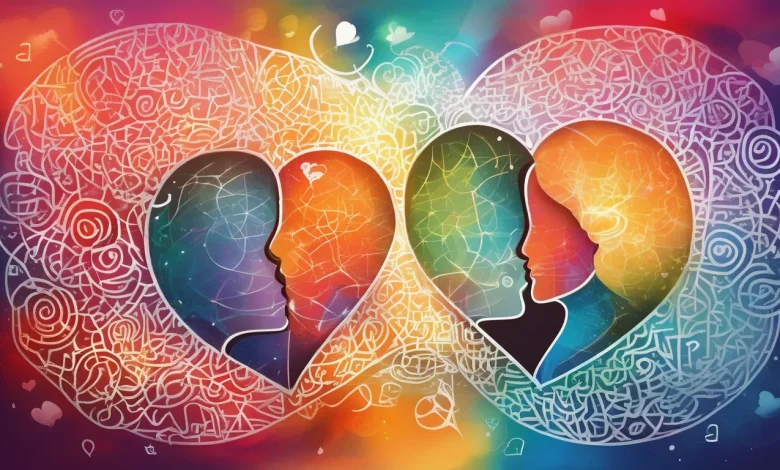How to Improve Communication in a Relationship

Have you ever poured your heart out to someone you care about, only to feel like your message didn’t quite land? Or perhaps you’ve been on the receiving end of affection that somehow missed the mark, despite the good intentions behind it? You’re not alone in this common relationship challenge.
As a psychologist who’s worked with hundreds of couples, I’ve seen firsthand how miscommunication about emotional needs can create unnecessary distance between people who genuinely care for each other. The good news? Understanding your unique emotional connection style can transform your relationships.
The Five Connection Styles That Shape Our Relationships
Dr. Gary Chapman introduced the concept that we all have preferred ways of expressing and receiving affection. These five distinct styles help explain why some gestures resonate deeply with us while others might feel hollow:
- Verbal Appreciation – For some, hearing “I love you” or receiving specific compliments creates profound emotional resonance.
- Supportive Actions – Others feel most connected when someone takes action on their behalf, whether it’s handling a difficult task or simply making coffee in the morning.
- Thoughtful Tokens – Some individuals feel particularly valued when receiving meaningful gifts or keepsakes that show they were in someone’s thoughts.
- Focused Attention – For many, nothing communicates care like undivided attention—conversations without distractions, eye contact, and genuine presence.
- Physical Closeness – From reassuring hugs to casual touches on the arm, physical connection speaks volumes for those who connect through touch.
Understanding these different styles explains why your partner might not recognize your expressions of affection if you’re “speaking” in different emotional languages.
Why Understanding Connection Styles Matters
When you and your partner have different ways of showing and receiving care, you might both be expressing affection that gets lost in translation. Learning to communicate in a way that resonates with your partner—and helping them understand what makes you feel valued—creates a foundation for deeper intimacy and fewer misunderstandings.
Discovering Your Primary Connection Style
Ready to understand your own emotional preferences better? Here are some approaches that might help:
Reflect on What Makes You Feel Truly Valued
Think back to moments when you felt deeply appreciated. Was it when someone took time to write you a heartfelt note? When they cleared their schedule to be with you? Or perhaps when they noticed you were overwhelmed and quietly handled a responsibility for you? These emotional high points offer clues to your connection preferences.
Notice Your Natural Tendencies
We often express affection in ways that would resonate with us. Do you frequently offer compliments? Are you the one who remembers birthdays with thoughtful gifts? Do you prioritize physical closeness like hugs or sitting close to loved ones? Your instinctive expressions often mirror your own preferences.
Take an Assessment
For more clarity, consider taking Dr. Chapman’s assessment, which can help identify your primary and secondary preferences.
Making Connection Styles Work in Your Relationships
Understanding is just the beginning—applying this knowledge is where the magic happens.
For Your Own Needs:
- Communicate Clearly: Instead of hoping others will guess, gently explain what makes you feel valued. “I really appreciate when we can talk without distractions” is more effective than silently wishing for quality time.
- Set Kind Boundaries: If certain expressions of affection don’t resonate with you, acknowledge the intention while redirecting. “I know you show you care by doing things for me, and I appreciate that. Sometimes what I really need is just to hear what you value about our relationship.”
For Your Partner’s Needs:
- Become a Relationship Detective: Watch for patterns in how they naturally express affection—these often reveal their own preferences.
- Ask Rather Than Assume: Simple questions like “When do you feel most appreciated by me?” can provide invaluable insights.
- Stretch Your Comfort Zone: If your partner thrives on forms of connection that don’t come naturally to you, small consistent efforts in their preferred style can make a tremendous difference.
Common Questions About Connection Styles
Can my connection preferences change over time?
Absolutely. Life circumstances, personal growth, and even relationship stages can shift your needs. Someone going through a difficult time might temporarily need more verbal reassurance, while someone overwhelmed with responsibilities might value supportive actions more highly.
What if we have completely different styles?
Different styles aren’t a relationship obstacle—they’re an opportunity for growth. Learning to “speak” each other’s emotional language expands your relationship vocabulary and creates more pathways for meaningful connection.
Does this concept apply beyond romantic relationships?
Definitely! Understanding connection styles improves parent-child relationships, friendships, and even work relationships. Everyone appreciates feeling valued in ways that genuinely resonate with them.
Building Stronger Connections Through Understanding
Understanding your emotional connection style isn’t just about getting your needs met—it’s about creating a foundation for authentic intimacy. When we feel truly seen and appreciated, we’re more likely to bring our full selves to our relationships.
Remember that this journey of understanding takes time and patience. Be gentle with yourself and others as you learn to communicate in ways that create deeper connections. The effort you invest in understanding these dynamics will pay dividends in all your relationships.
For more insights on building stronger connections, consider exploring Dr. Chapman’s work on relationship communication or scheduling a conversation with a relationship coach who can help you apply these concepts to your specific situation.






